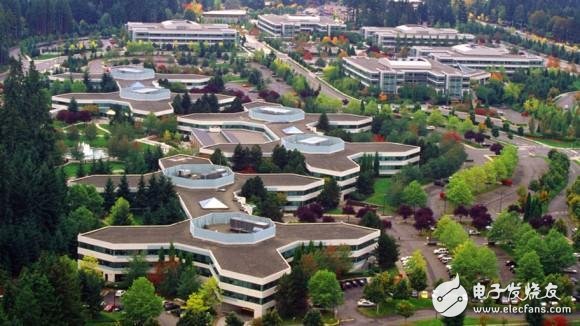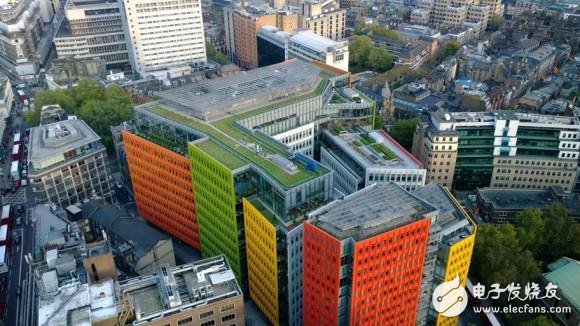The recent popular trend of wearables is an important step towards a smarter world, but the measurement range of smart watches is limited to the user alone, but today's smart watches are not smart enough. In comparison, the Internet of Things is smaller and smarter.
The Internet of Things (IOT) consists of thousands of tiny sensors that measure how far a wall moves from an earthquake to temperature or humidity. It can determine if a dose of vaccine exceeds normal temperature to ensure that the vaccine is still safe and effective.
The Internet of Things monitors the performance of individual components in a jet and tells you if your baggage, children, pets, and even seals are in a safe location. In short, its range of applications is wider than smart watches.
This is called the Internet of Things because sensors are connected to various objects. But what really matters is that these sensors can tell you some important information. In Japan, NTT DoCoMo puts the temperature sensor on the pregnant cow. When the temperature changes, the sensor can tell the farmer which cow is going to give birth.
In this way, the farmer can conduct a physical examination of the cow. If there is any problem with the calf, the farmer can inform the veterinarian earlier. Normally, one of the 10 calves in the production process will die unfortunately, but after using the sensor, the loss is reduced to one hundredth.
However, the largest application area of ​​the Internet of Things (which is the one most likely to affect you) is the so-called smart city. This means that the Internet of Things will be used in systems that manage street lights, monitor traffic flow and parking spaces, and then adjust the price of parking spaces in the parking lot based on this information, and finally it will guide you to the parking lot.
Smart city, reducing costs
In the long run, a truly smart city will connect to many different systems and offer a variety of ways for you to interact with these systems. But many IoT projects either increase the intelligence of a city's existing intelligence or integrate separate monitoring and management systems.
This is generally the case for the £24 million Glasgow Smart City project. The program places sensors on street lights and traffic lights and connects them to a closed-circuit monitoring system to let you know when the bulb needs to be replaced. At the same time, these sensors will let you know when the streets are empty, so you can save money by dimming or turning off the street lights, while not making people feel unsafe on the dark roads. Put on the energy-saving light bulb and dim the light by 30%. In this case, no one will notice any difference in lighting, and you also save a lot of money.

Comparing the traffic and parking spaces in downtown Los Angeles, we can see that there are actually empty parking spaces, but people usually can't find them.
Some cities in the United States have begun to analyze sounds, monitor car accidents and speeding through traffic cameras, so that emergency rescues are automatically initiated (and videos that may be useful for accident analysis are automatically flagged). But how do you get the most out of this integrated information when you connect lighting, parking, transportation, and other systems? This is what the smart city really should promise.
In Los Angeles, almost one-third of the traffic is people looking for parking spots back and forth. This is not just because there is not enough space to park, but people don't park their cars in those empty spaces. In Los Angeles, it was found that one-quarter of the parking spaces were the most expensive, compared to the price of parking in other places as low as two hours a dollar. Therefore, it may be helpful to lower the price of those who are not favored. Of course you have to tell people where these cheap parking spaces are. The long-term plan is a smartphone app that can suggest cheap parking for some destinations, or tell you how to park your car faster and cheaper next to a public station for the next car or train. .
Microsoft House
You can also save a lot of money by connecting heating, air conditioning and other building systems together (like a giant bird's nest). Microsoft has 145 buildings and 58,000 people in its Redmond campus. In midsummer, the park uses 3% of the total electricity used in the area. It can be seen how important it is to make buildings smarter to save some of their $62 million in annual utility bills.
Unfortunately, almost no building has the same heating and cooling system, and there are 35,000 different devices to look after. Darrell Smith's research team built a software system that would integrate all the data without adding any sensors, instead of spending $70 million to replace all the devices. He said: "In the past, we did know that we are wasting energy. We just don't know how to waste or waste."

Even the seemingly identical Microsoft campus building will have different devices, just like running a small city.
Now, when a building starts to get stuffy because the vents are blocked, Darrell Smith can look at the temperature trends in the surveillance and know the situation very early before receiving the complaint. You have already wasted money on the simultaneous operation of the two systems, and it is still unrewarding.) You may ignore a low priority fault that occurs at 3 am, but the monitoring system can let you know if the fault is only annoying to sleep in the early morning or cost $12,000 overnight.
All in all, in less than 18 months, Darrell Smith has saved Microsoft $2 million in expenses. In addition to this, there are other good ideas, such as turning off air conditioning in a conference room without an appointment to save money. By July 2014, Microsoft will install such a monitoring system in all its US divisions, followed by Microsoft offices in India, China and the United Kingdom.
A step above the waste technology
You can go to a Microsoft partner like Accenture to build the same IoT system, but it's definitely a huge project.
The first thing we will see is something that can easily add smart devices, usually to help you save money or get better service right away. Take the "big belly" solar waste bin, which has a solar panel that powers the compactor inside, so that it can crush the internal garbage and install more. These "big belly" bins are usually housed in some national parks in the United States, because in those remote areas, emptying the bins is a nuisance.

Times Square’s “big belly†solar waste bin will automatically notify the cleaning center when the garbage storage reaches 85%.
When the Nottingham City Hall placed the bins in the city center, the number of times they emptyed the bins decreased from six times a day to once every other day. At the same time, because each bin can notify the cleaner before it needs to be emptied, there is less trash on the street. In the UK, these big belly bins have been installed in more than a dozen cities.
If you can manage to save more money by installing sensors on the street, then installing the sensor is worthwhile. But remember, you also need to power these sensors and create a system that allows them to communicate with each other. Such a system must be wireless because it is cheaper and does not have to drill holes in old historic buildings (this is especially worrying, especially after Deutsche Telekom installed sensors in the Leaning Tower of Pisa last year). .
Getting the necessary wireless support for the operation of the Internet of Things may require government assistance and appropriate infrastructure. ARM's Bryan Lawrence pointed out that the Internet of Things we want to achieve is a mesh network in which one node can collect and transmit information on 200 street lights instead of having each street light capable. Notify the maintenance department at the time of the failure.

Like Google’s London office, smart cities don’t just mean using rooftop space.
If you put the sensor on something that doesn't have a power supply, you'll want to have a small portable battery. Soon, you can borrow this tiny battery to send data using 3G network devices. That's why David Cameron announced that OFCOM, the UK telecommunications regulator, is monitoring how the allocation of spectrum makes IoT devices more easily interconnected.
In addition to collecting information from the smart infrastructure, we also want a smart application that allows us to get a lot of benefits without having to do much work. If you want to go home from your office and go to the theater to watch a movie, you will not want to interact with the smart city. Lawrence pointed out: "You just want smart things to happen, which means you can get where you want to go from where you are in a very smart way."
If you have to pay for some smart gadgets, such as booking a parking space outside the restaurant, a system that makes it simple, cheap, and privacy-protected will come into being. A true smart city involves a lot of improvement work, but even a small smart device can make life easier (or even cheaper) for many people.
The FirstPowerDeep cycle battery is desgined for apllcation as General Purpose and Deeper discharge. This series focus on improving the cycle life and runtime that base on Standard series.
We welcome orders with "FirstPower" brand; We are also flexible to accept orders on OEM basis. Contact us now! Your partnership with FirstPower will prove worthy of it.
Reserve Deep Cycle Battery,12V Deep Cycle Reserve Battery,Reserve Deep Cycle Renewable Battery
Firstpower Tech. Co., Ltd. , https://www.firstpowersales.com